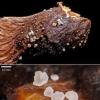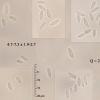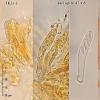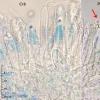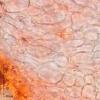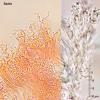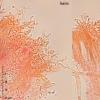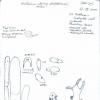
12-01-2026 05:24
 Danny Newman
Danny Newman
Cyathicula coronata on Urtica dioicaCataloochee Di

11-01-2026 20:35
Hello.A very tiny pyrenomycete sprouting sparsely

15-12-2025 11:49
 Danny Newman
Danny Newman
ITS sequences from the following two collections B

09-01-2026 17:41
Arnold BüschlenHallo, F. dilatata wird von vielen Bryoparasiten

10-01-2026 20:00
Tom SchrierHi all,We found picnidia on Protoparmeliopsis mur

07-01-2026 22:22
 Danny Newman
Danny Newman
Tatraea sp. on indet. hardwood The Swag, Great Sm

10-01-2026 01:18
 Danny Newman
Danny Newman
cf. Neovaginatispora fuckelii on indet. shrub Pre

07-01-2026 10:24
 Danny Newman
Danny Newman
Pezicula sp. on indet. hardwood Appalachian Highl

09-01-2026 10:08
 Blasco Rafael
Blasco Rafael
Hola, en el mismo habitat que la anteriorRetamaDia

08-01-2026 21:22
 Blasco Rafael
Blasco Rafael
Hola, He recogido esta muestra de Orbilia sobre Re
Hi to all
My friend J. Linde, a great discover of minute fungi, collected these small, white, downy, shortly stipitate, briefly cupulate later pulvinate apothecia, 0.3-0.5 mm in diameter on seeds (samara) of Acer pseudoplatanus.
Thea asci, 8-spored, are IKI negative and with croziers. The spores have only few minute guttules. Excipulum with textura + or - prismatica. The paraphyses are cylindrical, without conspicuous Vb's in water but stain in Crb. Close to the margin they become branched as the excipular hairs (marked with red arrows in the pic).
The very dense excipular hairs have finger-like protuberances as the Mollisina species. I think it could be a Mollisina but I don't know a species that fits well with our fungus.
Thanks for your opinion
As-tu comparé avec Mollisina acerina ?
Amitiés, Guy
Salut Guy
My first idea was this species with IKI reddish asci and without croziers (fide Zotto). So I think is not possible.
Thanks

I agree with that species concept although I did note for my acerina collection IKI rb besides in acerina the spores are more ovoid (less pointed than in this collection). The only Mollisina I know with croziers is also undescribed on Pteridium leaves
regards,
Stip

HB 9340, Chemnitz, Acer fruit. Ap. 0.3-0.6 mm diam., whitish, Calycina-like. Sp. cyl.-fusoid-clavate, *5-6.5 x 1.8-2 µm, Ölm.0,5-1. Asci ca. *28-37 x 5-6 µm, IKI 2rb, very dirty red. Hairs on exterior only as cortical cells with many small finger-like outgrowths. Exudate over exterior light golden-yellow.
I suppose it was with croziers, but my photos do not clearly show. I had it in the folder of Stip's one on Pteridium. I have kept the material and hope to reexamine it at some time.
Zotto
Hi Zotto
Your HB 9340 fits well but 'my asci' have any reaction in IKI. I'm very sure of it!
Thanks!

